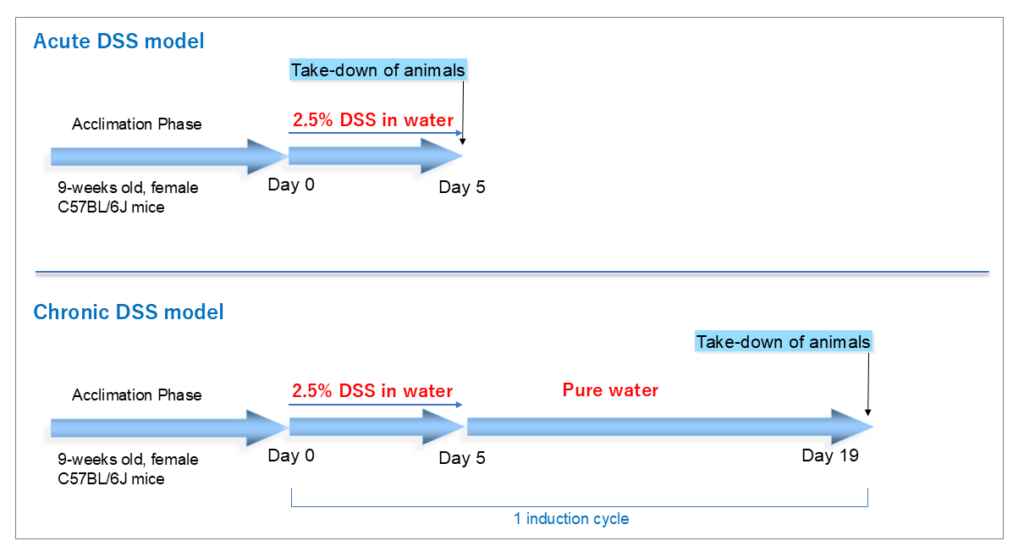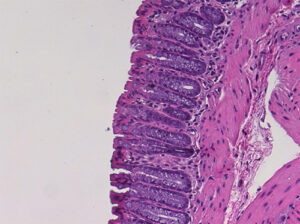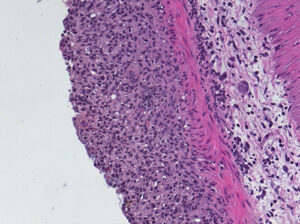SMC MODELS
DSS-induced colitis model
The DSS-induced colitis model for IBD
The DSS-induced colitis model is the most established disease model for IBD (inflammatory bowel disease) and widely used to investigate the pharmacological efficacy and mechanism of new drug candidates for the treatment of IBD.
Depending on the duration, and frequency of DSS administration, the animals may develop an acute or chronic pathology. The acute model is suitable for pharmacology studies focusing on colitis, while the chronic model is suitable for pharmacology studies focusing on fibrosis.
How we create the acute DSS-induced colitis model
To create the acute DSS model, 9 weeks-old, female C57BL6 receive 2.5% DSS (Dextran Sulfate Sodium) in the drinking water for 5 consecutive days. The mice are sacrificed after 5 days.
In the acute DSS model, we observed an increase in disease activity index (DAI) and damage to colon tissue (loss of crypt/epithelium layer and inflammatory cell infiltration).

How we create the chronic DSS-induced colitis model
To create the chronic DSS model, 9 weeks-old, female C57BL6 receive 2.5% DSS (Dextran Sulfate Sodium) in the drinking water for 5 consecutive days followed by 14 days of pure drinking water (without DSS). This procedure is called 1 induction cycle. It is possible to extend the study period by repeating the procedure and exposing the mice to several induction cycles.
In the chronic DSS model, we observed accumulation of collagen in the colon (fibrosis) and an associated increase in colon weight.
Analysis items and key endpoints
Histopathological analysis
Sirius Red staining (for fibrosis area)
Masson trichrome staining
HE staining
a-SMA (IHC)
Biochemistry analysis
Colon IL-1b
Colon IL-6
Colon IL-12
Colon TNF-a
Plasma IL-1b
Plasma IL-6
Plasma IL-12
Plasma TNF-a
Other parameters
Colon weight
Colon length
Body weight
Disease activity index (bleeding, stool consistency, weight loss)


Figure 1. HE staining of the intestine from the DSS model
Crypt and epithelial cell loss, and inflammatory cell infiltration are observed in the DSS model, compared to normal mice.
Contact Us
For more information on our experience with the DSS model or to discuss your study plans, please let us know through the contact button below.
